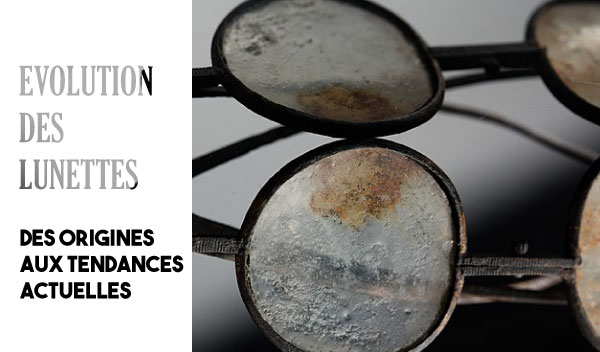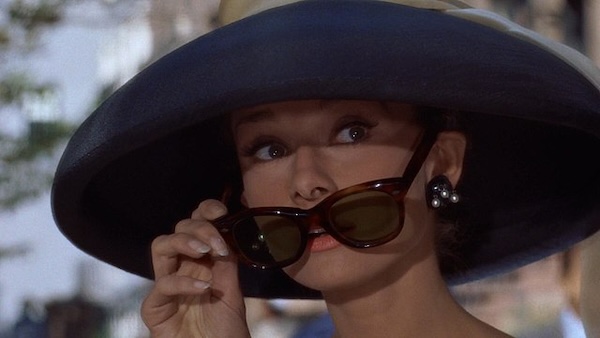The evolution of eyewear: from its origins to current trends

Eyeglasses, now omnipresent in our daily lives, have not always been the mix of utility and fashion that we know. Their history begins in the Middle Ages, at a time when they met a strictly functional need: to offer a solution to vision problems, particularly among scholars. Since then, they have continued to evolve, accompanying technological advances, industrial revolutions and cultural upheavals. This evolution reflects major trends of each era. From the status of a rare object reserved for an elite, glasses have gradually gained in accessibility to become universal tools. They then transcended their purely utilitarian role to establish themselves as fashion and personal expression accessories. Today, they embody a perfect alliance between technological innovation, aesthetics and personalization. As the 21st century paves the way for connected and eco-responsible glasses, let's look back at their rich history and their transformation through the ages.
The first glasses: Birth of a revolutionary tool
The first spectacles appeared in the 13th century in Italy , probably in the region of Venice, a nerve center of crafts and trade. They came in the form of two convex lenses held by a rudimentary frame, often made of wood or metal. These first inventions, called " bésicles ", were mainly intended to correct presbyopia and were intended for a literate clientele: copyist monks, scholars and wealthy merchants.
With the invention of the printing press by Gutenberg in the mid-15th century, the demand for spectacles exploded . Wider access to writing prompted glass artisans to perfect their techniques. Pince-nez spectacles became popular, but their impractical fit limited their widespread adoption. However, they mark an important step in the democratization of visual aids.
This period is also marked by the absence of in-depth knowledge about the different visual disorders. The lenses were mainly designed to improve near vision, without a precise distinction between myopia and hyperopia. Despite their limitations, these first glasses symbolize a major advance in the history of science and visual comfort. They also bear witness to a time when innovation responded to an essential need: to allow individuals to better interact with a world in full intellectual and cultural change.

Evolution of glasses: democratization and technical innovation
The evolution of glasses accelerated in the 18th century thanks to the invention of rigid temples (ear hooks) by Edward Scarlett in London. This major innovation transformed glasses into a more practical object, capable of staying in place without requiring constant support. In addition, corrective lenses diversified: solutions adapted to myopia and other visual disorders began to be designed, opening the way to wider uses.
In the 19th century, the industrial revolution played a decisive role in the democratization of glasses. Mass production reduced their cost, making them accessible to a wider population. At the same time, frames diversified: tortoiseshell, steel, gold or even precious wood, each material reflects a combination of fashion and social status. This period also saw the appearance of the first sunglasses, initially designed to protect the eyes of pilots and soldiers before becoming leisure accessories.
Technical developments went hand in hand with a better understanding of visual health . Opticians developed more precise diagnostic tools, making it possible to meet the specific needs of each patient. Glasses ceased to be perceived as a simple medical tool; they became a symbol of access to education and information , reflecting the growing importance of vision in an increasingly visual world.
The 20th Century: From Functional Eyewear to Fashion Accessories
The 20th century marked a decisive turning point in the history of eyeglasses. Thanks to technological advances, they became both lighter and more efficient. The appearance of progressive lenses in the 1950s, developed by Essilor , revolutionized visual correction by offering an elegant solution to presbyopes. These technical innovations allowed eyeglass wearers to combine comfort and efficiency, while improving their quality of life.
However, it was above all on the aesthetic level that eyeglasses underwent a spectacular transformation. They went from being a simple functional tool to a real fashion accessory. Iconic brands such as Ray-Ban and Persol positioned themselves as references in terms of design. Iconic models, such as the Wayfarer and the Aviator, became symbols of social status and style .

The glasses worn by famous people reinforce this image. Audrey Hepburn and her large frames in Breakfast at Tiffany’s , or John Lennon’s small round glasses, have left a lasting mark on the collective imagination. These trends show how glasses, once stigmatizing, become desirable objects and markers of identity.
At the end of the 20th century, the introduction of materials such as plastic and titanium further expanded the design possibilities. Glasses adapt to all face shapes and tastes, testifying to a profound change in their perception: they are no longer just a necessity, but a way of expressing one’s personality.
Evolution of glasses in the 21st century: Between high technology and personalization
Today, glasses represent much more than a simple corrective tool. With the advent of high technology, they integrate advanced features. Photochromic lenses , which adapt to brightness, and connected glasses, capable of projecting information in augmented reality, illustrate this new era. These innovations show how glasses meet constantly evolving needs, combining comfort, performance and connectivity.
At the same time, consumers are looking for unique and environmentally friendly products. Customizable frames, 3D printed or made from recycled materials, are gaining popularity. Brands are also investing in eco-responsibility, offering collections designed to minimize their ecological footprint.

Fashion trends always play a major role . Retro styles, inspired by the 1950s or 1980s, are making a comeback, while minimalist designs are appealing to a younger clientele. Advertising campaigns highlight the idea that glasses are not only practical, but also a way to assert one's individuality.
21st century glasses symbolize a perfect fusion of tradition and innovation. They embody the evolution of an accessory that has become essential, capable of adapting to all eras and all uses, while anticipating the needs of the future.
An ever-evolving legacy
The history and evolution of eyeglasses illustrate a fascinating evolution where science, innovation and fashion intersect to meet increasingly diverse needs. From a simple corrective tool intended for an elite, they have become everyday objects, universal and accessible, while remaining a symbol of style and personal expression.
In the 21st century, the arrival of connected glasses and eco-responsible materials marks a new stage, proving that this accessory, both ancient and modern, continues to evolve with the times. As technological advances and environmental concerns redefine the future of optics, eyeglasses confirm their dual role: that of improving vision and reflecting the aspirations of an era.
Looking to the future, it is exciting to wonder how this accessory, which has spanned centuries, will continue to combine utility, aesthetics and innovation to meet the needs of future generations.


